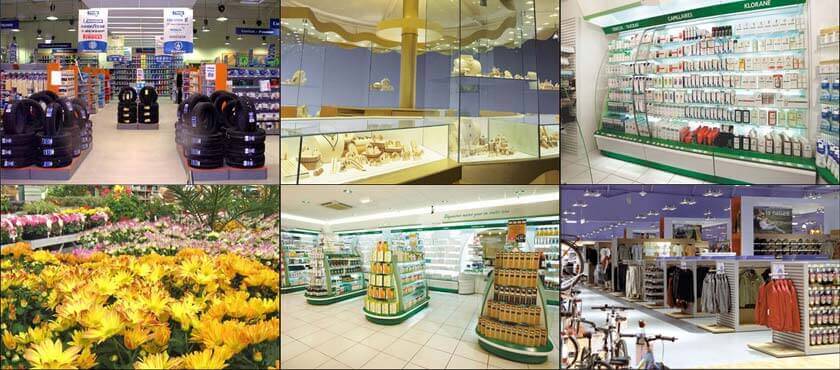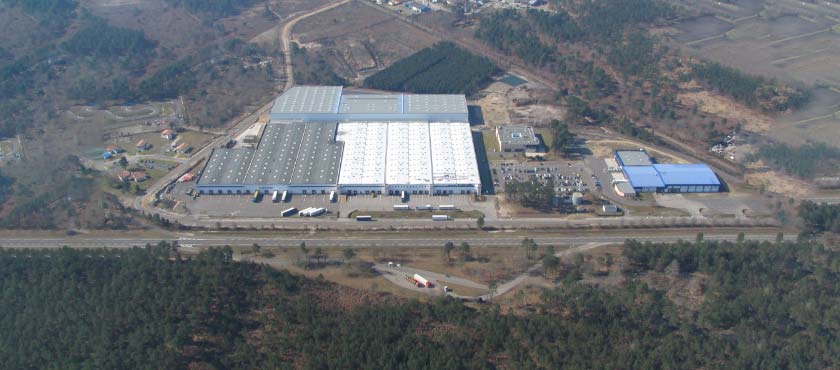SCALANDES MODERNIZES TO DELIVER BUSINESS VALUE
Scalandes, the purchasing and logistics arm of E. Leclerc, one of France’s major retail co-ops, supplies the stores in the South West of France and Portugal from its warehouse in Mont De Marsan. For over 10 years, the company’s back office systems on the System i have evolved and grown with LANSA, such as with real-time XML integration of the national catalog. To further improve user productivity, Scalandes, together with its software partner Sprint Logiciels, have modernized the system using RAMP and Visual LANSA.
Bernard Cambou, IT Director at Scalandes, says, “Our system has grown over the years and covers all the business areas. It forms an ivory tower that no one would like to replace. By applying the 80/20 rule and modernizing the most important programs first, we have significantly increased user productivity and responsiveness, without having to redevelop the entire system.”
We have significantly increased user productivity and responsiveness.
- Revamping Screens not Enough
- 80/20 Rule Provides Starting Point
- Benefits in Quality and Quantity
- Delivering Business Value
- Company and System Information
Revamping Screens not Enough
“I had two goals in mind when we started the modernization project of our core application,” explains Cambou. “Firstly, I wanted to deliver added value to our business by providing more efficient data access to those users who constantly need to make decisions based on information.”
“Secondly, I was looking for a way to remove the barriers between Windows and System i applications.”
“The financials, historical information, competitive data and other statistics are stored at different locations throughout our systems. Therefore it was very difficult to get a quick and clear overview. This was hampering our users in making the right decisions and responding in a timely manner.”
“Product purchase information was spread out over 15 green-screens. Now it’s grouped over just two tabs. Having a consolidated view is necessary to make sound and quick decisions. The users would eventually collect the information they needed, but it took time because it was only available in bits and pieces. That made it hard for our users to take decisive actions when needed and slowed down our responsiveness as a business.”
“Users were asking us to move from character-based screens to a graphical user interface, but I didn’t want to limit the project scope to just revamping 5250 screens. I wanted to regroup data from multiple screens into a single screen and create a far more useful interface for the user.”
“I wanted to rethink our system in a business manner without having to rebuild it. I wanted to reuse the existing system assets. No replacement, no redevelopment and no implementation of a packaged ERP system. I wanted to simply improve user productivity and responsiveness and, most importantly, not lose any of the system’s functionality.”
Product purchase information was spread over 15 green-screens, now it’s grouped over just two tabs.

80/20 Rule Provides Starting Point
“We chose RAMP and Visual LANSA to get maximum reuse of the system’s functionality and stability,” says Cambou. “We simply re-designed the user interface and the way the information is displayed, while preserving our existing system assets,” explains Cambou.
The Visual LANSA Framework provides a portal of composite applications that can be deployed either as web or Windows rich clients. Users are presented with a tree view that includes all functions, regardless of whether those functions are deployed on the System i, Windows or ActiveX. Visual LANSA Framework gives them access to those functions with a single unique and standard graphical interface. The Visual LANSA Framework was crucial to Scalandes’s success.
Cambou comments on the user feedback process, “We organized a workshop where the users and the IT team worked together on a new design for the user interface. This was our opportunity to group together what belongs together and remove redundancies. We rebuilt the main menu based on ideas and feedback from the users. We worked through each business line one by one. Some users were worried when they used the new system for the first time. However, they all quickly got used to it.”
Stéphane Labrousse, director of Sprint Logiciels and project manager for Scalandes’ system modernization project, adds, “Indeed, we took inventory of all business functions and together with the users we reorganized these in the Visual LANSA Framework.”
“In a business application environment, the 80/20 rule is common: 20 percent of the functions are used 80 percent of the time. That ’20 percent’ is the place where you should start your modernization project. You need to have a very good understanding of the users’ day-to-day activities to decide on your starting point,” continues Labrousse.
“With Visual LANSA, we have developed a new way of visualizing and sharing information. Visual LANSA and Visual LANSA Framework are very powerful development tools. Plus, using RAMP, we can keep our 5250 assets and have them dynamically revamped in the same Windows framework. The new LANSA portal gives our users a productive and single graphical point of entry that shaves several minutes from each of their transactions.”
We chose RAMP to get maximum reuse of the system’s functionality.

Benefits in Quality and Quantity
“The benefits you can realize are both in terms of quality and quantity. First of all, the quality of our customer service and procedures in general have improved. We have dozens of users who now have a better way of answering the inquiries of our customers, the stores. Our staff can instantly see the status of orders and deliveries. All information is available with a single click. Previously the information was dispersed over several screens,” says Cambou.
“On the quantitative aspect, the actual time and dollars we save, that is more difficult to measure; but I can say that the gains are significant.”
Labrousse adds, “The business users as well as the IT department quickly adopted the new LANSA tools and LANSA-built application. Everybody is benefitting in terms of productivity. Also, users find their work more interesting now that repetitive tasks have been removed. The number of requests we get from the users testifies to their involvement and passion for this modernization project.”
“We had no previous experience in Windows development. In spite of that, it was easy to adopt event driven and object oriented programming.”
“LANSA’s practical and business oriented approach is important for us. Visual LANSA offers enormous capabilities for reuse of components. Any calculation or other piece of logic can be reused by a ‘single right click’ on multiple forms. We are able to reuse components in any context. For example, we reused them in a dashboard dedicated to statistics, frequencies and variation ratios or breaking events. Visual LANSA’s development technology is intuitive and comes naturally”.
The quality of our customer service and procedures in general have improve.
Delivering Business Value
“We met our goal; we reused the existing system; we improved on it; we have not lost any functionality and all the data is available with a single click,” says Cambou.
“Our users wouldn’t want to go back to the old system for anything in the world! That’s the proof – we really improved their day-to-day work.”
“As for the future, after having brought a lot of efficiencies to the operational level, my next goal is to provide more value at the decisional level. With Visual LANSA, we have the right tool to develop management dashboards and consolidate information.”
“I also want to reduce the users’ reliance on Excel. When you extract data for manipulation in Excel, you always run the risk of errors and misinterpretations through manually rekeying and filtering of data.”
“As soon as we get the data in our system, we will bring reliability and the capacity to act promptly at decisional and policy making level. We will also improve the way we present information, which is important for understanding the results and making decisions.”
“In conclusion, I would like to say that this project confirms my original idea that simply revamping screens does not provide any real value, the screens just look different. A modernization project should concentrate on delivering business value,” concludes Cambou.
Our users wouldn’t want to go back to the old system for anything in the world!
Company and System Information
![]()
- The E. Leclerc co-op was established in 1949 and supplies over 580 individually owned hyper-markets, supermarkets and department stores including 70 outside of France with a turnover of 30 billion Euros.
For more information visit: www.e-leclerc.com - Scalandes is the purchasing arm of E. Leclerc. Scalandes has an annual turnover of about 600 million Euros and employs 280 people at its headquarters in Mont De Marsan. Scalandes supplies over 50 stores, mostly in the South West of France and 20 in Portugal.
- The IT team, lead by Cambou, consists of six people who take care of application maintenance, help desk and network management. Application development is outsourced. There are over 200 end-users, of which 50 are using the central purchasing application.
- Sprint Logiciels, who delivered the modernization project for Scalandes, is a system integrator based in Anglet near Biarritz. The company specializes in the retail and supply chain sectors.

